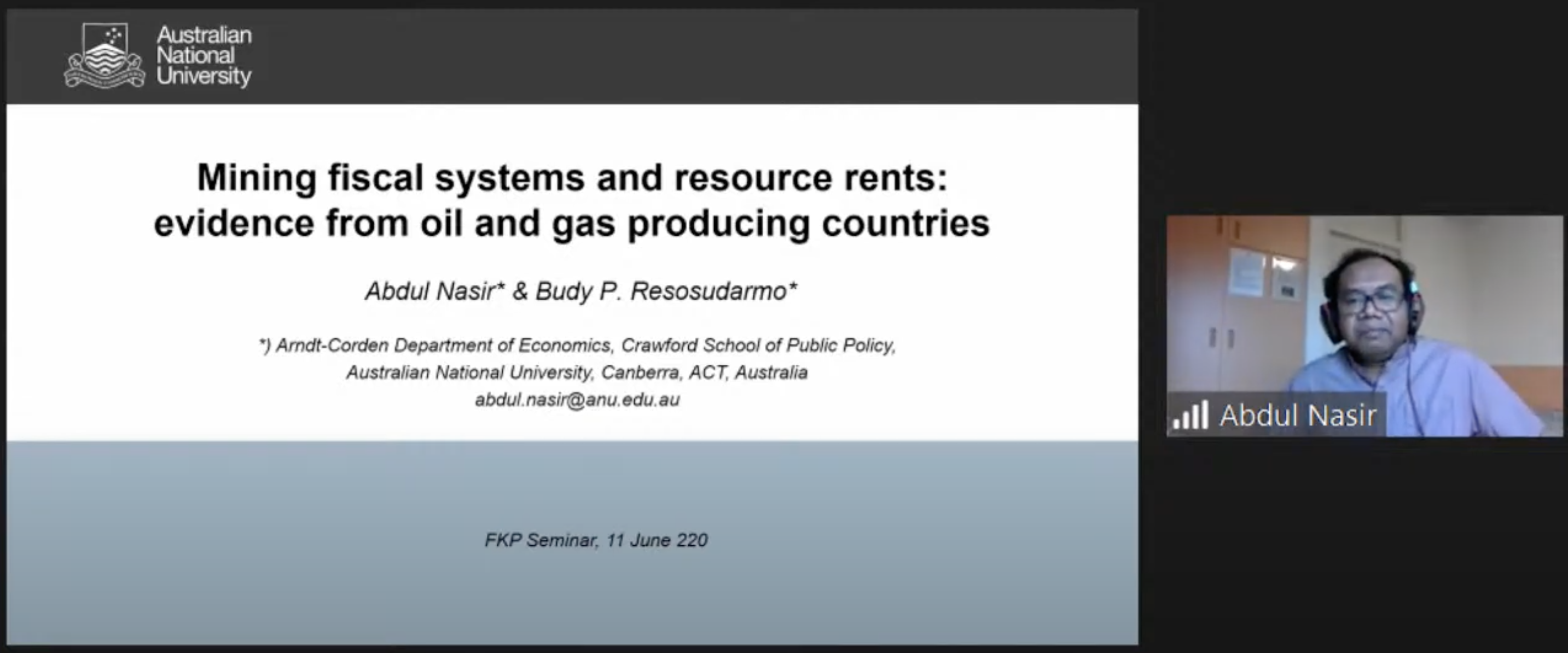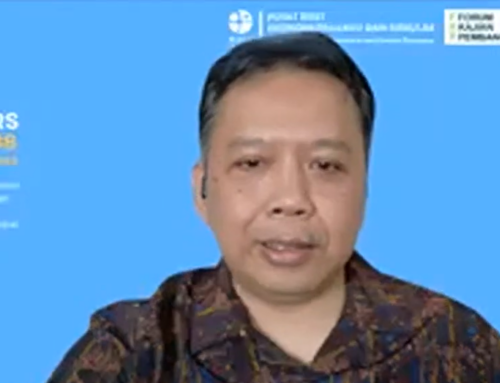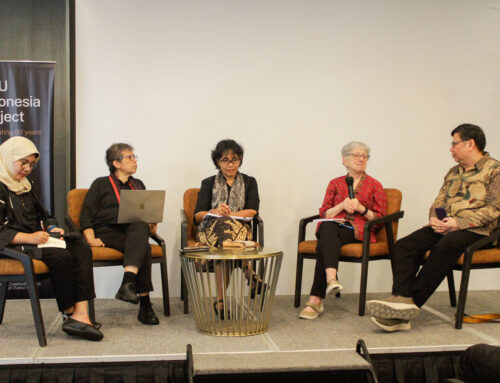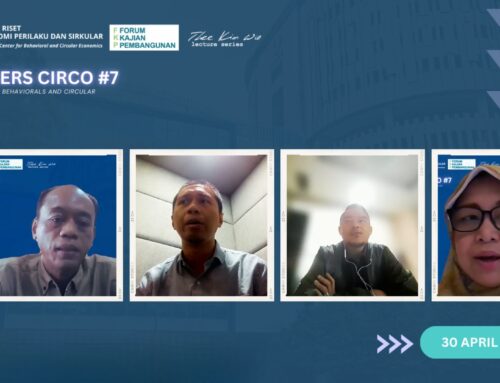FKP hosted by ANU Indonesia Project with Abdul Nasir (Arndt-Corden Department of Economics, The Australian National University). Thursday, 11 June 2020.
Keypoints:
- The type of mining fiscal system affects the amount of resource rents received by governments.
- As most countries have shifted from the Gross Royal Tax (GRT) system to the Resource Rent Tax (RRT) system, this study would like to see whether shifting to the RRT would impact the amount of resource rents received.
- This study shows that the RRT is capable of raising oil and gas rents, particularly in developing countries and democratic countries.
- After decades, the role of oil and gas remains significant as the industry contributes significantly to the GDP and government revenue. In developing nations, oil and gas also acts as a major source of energy.
- The mining fiscal system functions as the rule of the game in determining the rents acquired by the government from the the oil and gas companies.
- The mining fiscal system is divided into the Gross Royal Tax (GRT) system with payment based on output and the Resource Rent Tax (RRT) system with payment based on profit. As most countries started by adopting the GRT and then shifted to the RRT since the 1970s, this study aims to investigate whether shifting from the GRT to RRT impact the rents generated.
- There are pros and cons to the implementation of GRT and RRT. The GRT is beneficial as it is easy to calculate and to collect meaning that that government receipts can be ensured as soon as production starts, yet it may distort investment and production decision and lead to increased uncertainty and risks of the project. Meanwhile, the RRT is beneficial as it is relatively neutral to investment decision meaning that it’s more flexible in responding to the changing of variable factors, although it requires a more complicated administration system and lead to the overstatement of costs, gold plating, and transfer pricing.
- In a study of of upstream oil and gas sector across 82 countries between 1970-2015, a model was developed to assess the impact of the different mining fiscal systems used in each country. In the model, oil and gas rents are the dependent variable and mining fiscal system adopted is the independent variable of interest. The model also uses metrics of a country’s level of development and democracy as the control variables.
- The study mainly shows that adopting RRT or changing from GRT to RRT is generating rents at 1.5% higher than using GRT, meaning that the RRT system is capable of raising oil and gas rents.
- The positive impact of the RRT system on rents is then shown to be more significant in developing countries, possibly because oil and gas play a bigger role in developing countries than in developed countries. The positive impact is also shown to be more significant in democratic countries and countries with greater level of freedom as such countries may have more capability to apply the RRT more effectively.
- Furthermore, the study learns the channel bridging the relationship between mining fiscal system and oil and gas rents. The channel test shows that the number of oil and gas exploration wells and production are important channels.
- During the Q&A session, it was also explained that the study does not show that there is relationship between the mining fiscal system adopted by a country and the decision of investors to invest in that country.





